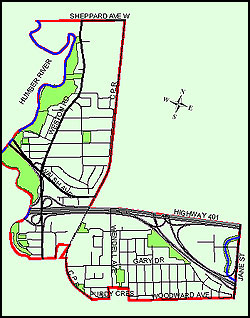I'd encourage you to take a look at page 26 of the Ward Boundary Review of May 2016 (
HERE). Toronto Planning provided population projections to the Ward Boundary Review (this was pre Ford's destruction of council), and Keesmatt was in charge of planning at the time. Ward 5 and 6 (which form most of Ward 3 now) were already listed as being above variances, but what's most interesting is that they are totally not in line with what was projected by the planning department, which already had the development proposals for the area.. Who would you blame if not for the Planning Department who made incorrect projections that were provided to the Ward Boundary review? Regardless if they are combined into one riding (Ward 3 now) or two separate ridings (as the original pre-Ford model), the projections were totally inaccurate.
View attachment 395215
Ok.....so let me follow here......
The study clearly lays out that the target was to get each ward within +/-15% of the target population.
2026 was the reference case (the election at which the wards were expected to be within target)
Wards 5 and 6 in the above scenario would have met this requirement (just), while 2 other wards were set to be slightly over.
Keeping in mind that the 25 ward scenario was not one envisioned by the report above, and that it uses boundaries that Keesmaat/said report did not set........
How far off is the population projection?
Based on what you show above, Wards 5 and 6 together were projected to be 139, 444
Based on your assertion above, the current population is actually: 141, 751
A variance of 2, 307 people or 1.65% higher than projected.
Given that this was an estimate going 10 years into the future; I think an underestimate of 1.65% is fairly reasonable.
The province of Ontario's estimates (Hemson) for the GTAH were off even more.
Source:
https://institute.smartprosperity.ca/sites/default/files/BILD Report - FINAL.pdf
****
Even look at two different Province of Ontario official forecasts Hemson vs the Ministry of Finance, both for the City of Toronto: (from the same source)
The variance is 2.3% in 2026, between those 2 estimates made for the same level of government, neither employing Ms. Keesmaat.
I find the assertion that Planning wilfully low-balled the numbers by a whole 1.65% a bit odd, and not supported by the evidence thus far.







